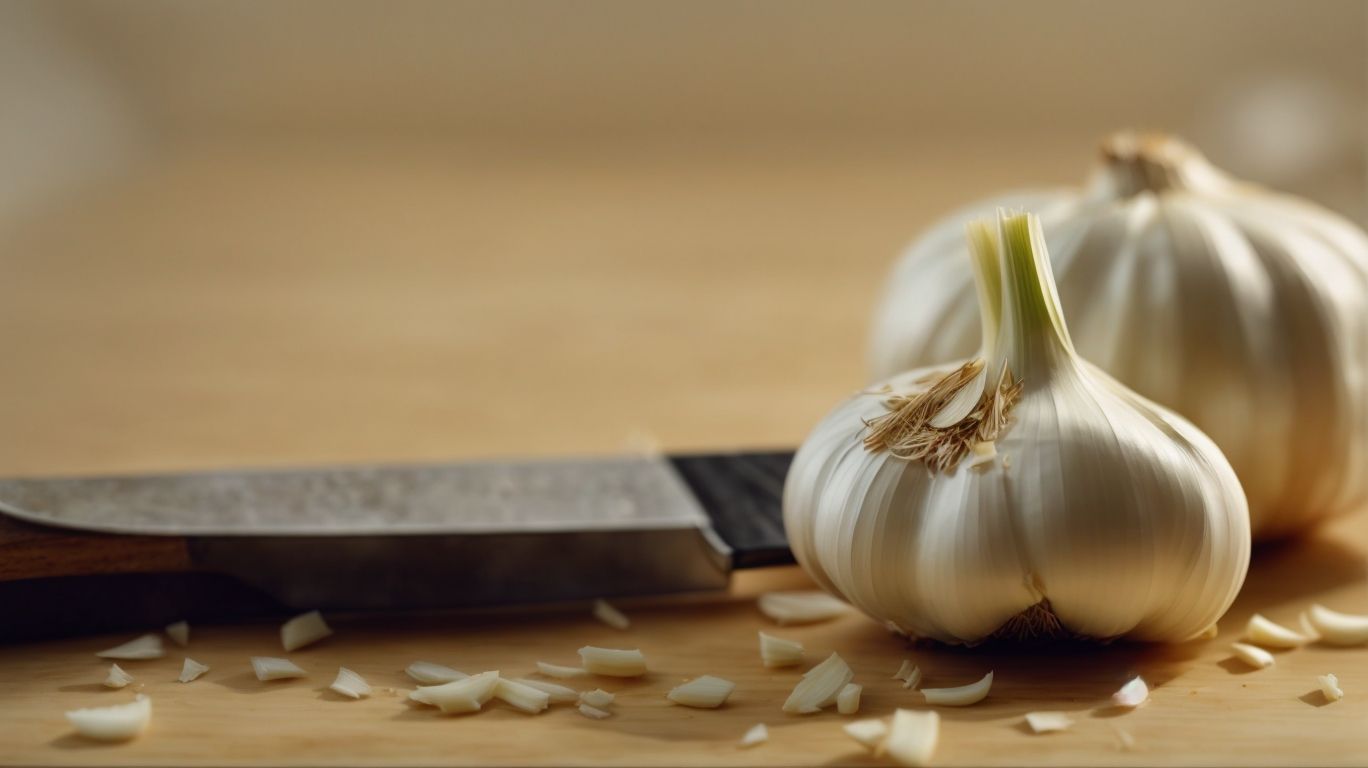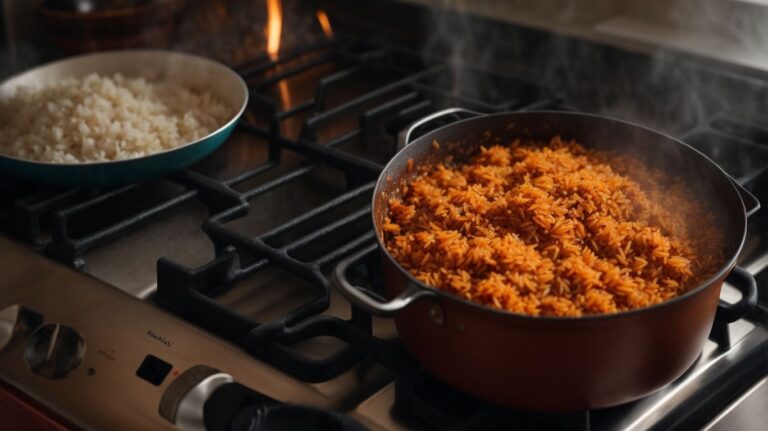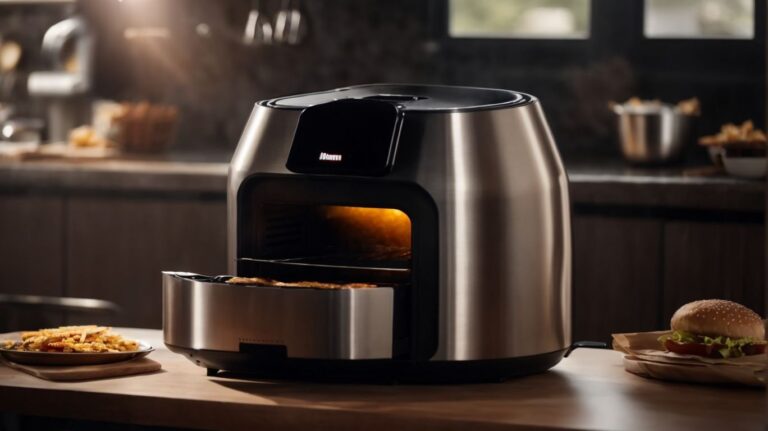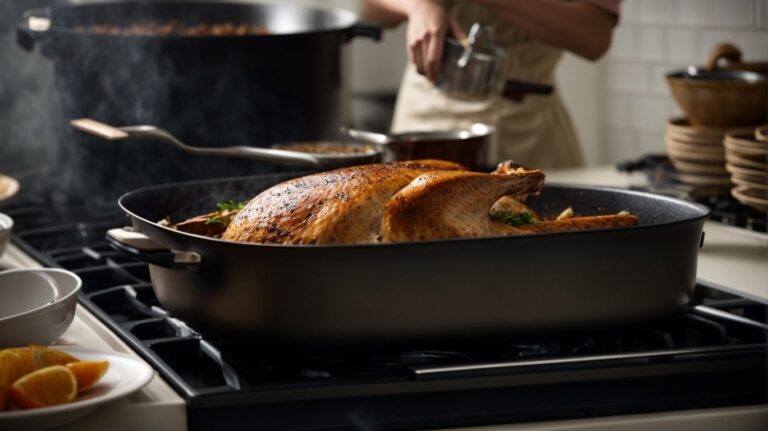How to Cook Garlic for Garlic Bread?
Garlic, a versatile and aromatic ingredient, adds a depth of flavor to many dishes.
We discuss the different types of garlic and how to prepare it for cooking. From peeling and chopping to roasting, we cover various methods to get the most out of this pungent bulb.
We dive into the delicious world of garlic bread, providing tips on ingredients, preparation, and cooking techniques.
If you’re ready to elevate your culinary skills with the magic of garlic, keep reading!
Key Takeaways:
What is Garlic?
Garlic, known scientifically as Allium sativum, is a versatile and aromatic ingredient used in various cuisines worldwide.
Originating from Central Asia, garlic has been cultivated for over 5,000 years and is known for its pungent flavor and unique health benefits.
Rich in allicin, garlic offers numerous health advantages, including boosting the immune system, reducing high blood pressure, and lowering cholesterol levels.
Garlic cloves, the individual segments that make up a garlic head, are commonly used in cooking to add depth and flavor to dishes.
There are several varieties of garlic, such as softneck garlic and hardneck garlic, each with its own distinct taste and appearance.
What Are the Types of Garlic?
There are several types of garlic, including softneck garlic, hardneck garlic, and elephant garlic, each offering unique flavors and characteristics.
Softneck garlic, known for its flexible stems and higher bulb yield, is milder in flavor compared to hardneck garlic. Hardneck garlic varieties, such as Rocambole and Purple Stripe, have a richer and more complex taste, often with spicy undertones.
On the other hand, elephant garlic, with its large cloves, is actually a type of wild leek and has a much milder, almost sweet flavor. In terms of culinary uses, softneck garlic is ideal for braiding and long-term storage, while hardneck garlic is preferred for roasting and is known for its ease of peeling.
How to Prepare Garlic for Cooking?
Preparing garlic for cooking involves various techniques such as peeling, chopping, crushing, and roasting to enhance its flavor and aroma in dishes.
One of the most common methods used for preparing garlic is peeling. To peel garlic cloves, press down on them with the flat side of a knife and then remove the skin. Another method is chopping, which involves finely slicing the peeled garlic cloves into desired sizes. For those looking to release a stronger flavor, crushing the garlic cloves using a garlic press or the flat side of a knife can be effective. Roasting garlic can add a sweet and mellow flavor to dishes, simply by drizzling whole cloves with olive oil and baking until soft.
Peeling and Chopping Garlic
Peeling and chopping garlic is a fundamental skill in the kitchen, essential for unlocking the pungent flavors and aromas of this versatile ingredient.
Pro tip: To peel garlic easily, place the clove on a cutting board and press down firmly with the flat side of a chef’s knife until you hear a slight crack. This will loosen the skin, making it easier to peel. Finely chopping garlic involves making thin, uniform slices lengthwise before dicing across the slices, creating small, consistent pieces that release more flavor when cooked.
Crushing Garlic
Crushing garlic using a garlic press or with a knife releases its essential oils, intensifying the garlic flavor in dishes.
Using a garlic press is a popular method as it efficiently breaks down the cloves into a fine texture, allowing the oils to mix seamlessly with the food. The key benefit of crushing garlic before cooking lies in the enhanced aroma and taste it imparts to the dish. This technique ensures that the flavor profile of the garlic is well-distributed throughout the meal, enriching the overall dining experience.
Roasting Garlic
Roasting garlic transforms its sharp taste into a mellow and savory delight, perfect for spreads, dressings, and marinades.
One of the simplest ways to roast garlic is by slicing off the top of a whole bulb to expose the cloves, drizzling it with olive oil, wrapping it in foil, and baking it until the cloves turn golden and soft. The caramelized sweetness that emerges from this process adds depth and complexity to dishes.
Pairing roasted garlic with fresh thyme enhances its earthy flavors, creating a fragrant and flavorful combination. You can also experiment with adding roasted garlic to mashed potatoes, soups, or even incorporating it into homemade hummus for an extra layer of taste.
How to Make Garlic Bread?
Creating delicious garlic bread involves combining fresh garlic, aromatic herbs, and buttery goodness to elevate a simple loaf into a flavorful delight.
To begin, crush and finely chop several cloves of garlic, ensuring their potent flavor spreads evenly throughout the bread. Next, melt a generous amount of butter in a pan, allowing it to infuse with minced parsley and oregano for added depth. Slice a loaf of crusty Italian bread horizontally, but be careful not to cut all the way through, creating a pocket for the garlic-butter mixture to permeate. Spread the herbed butter generously between the slices, making sure to drizzle any remaining goodness on top. Wrap the loaf in foil and bake in a preheated oven until golden brown and crispy on the outside. Once done, unveil the fragrant masterpiece, and slice it into individual servings to enjoy the harmonious blend of garlic, herbs, and butter.
For a more intense garlic flavor, you can sauté the minced garlic in butter before spreading it onto the bread, enhancing its aroma and taste. Also, if you prefer a crispy top, uncover the foil in the last few minutes of baking to let the bread develop a crust. Experiment with different herb combinations like thyme or rosemary to customize the flavor profile to your liking. Playing around with ingredient ratios can also yield varying intensities of garlic, so adjust it according to your taste preferences. By following these steps and tips, you can master the art of creating irresistibly delicious homemade garlic bread that will leave your taste buds craving for more!
Ingredients for Garlic Bread
The essential ingredients for garlic bread include fresh garlic, butter, aromatic parsley, and a sprinkle of cheese for added richness.
In terms of making delicious garlic bread, quality ingredients are key. Starting with fresh garlic will give the dish a robust flavor, while using high-quality butter will ensure a rich and creamy texture. Aromatic parsley brings a fresh and herbaceous element to the dish, balancing out the richness of the butter and cheese.
For those following a vegan diet, options such as vegan butter and dairy-free cheese can be used as substitutes without compromising on taste. These alternatives provide a plant-based twist to the classic garlic bread recipe, catering to different dietary preferences.
Steps to Make Garlic Bread
To make garlic bread, begin by preparing the garlic butter mixture, spreading it on bread slices, and baking them in the oven until golden and fragrant.
Once the garlic butter mixture is ready, it’s essential to evenly spread it on each bread slice, ensuring that the flavors are distributed evenly. Preheat the oven to 375°F and place the prepared slices on a baking sheet. Bake for around 10-12 minutes, keeping a close eye to avoid burning the edges while achieving a crisp and golden-brown crust.
For a flavorful twist, consider adding fresh herbs like parsley or basil to the garlic butter for added freshness and aroma. For cheese lovers, sprinkling grated parmesan or mozzarella on top before baking can elevate the taste and create a gooey, melty topping.
Tips for Cooking Garlic Bread
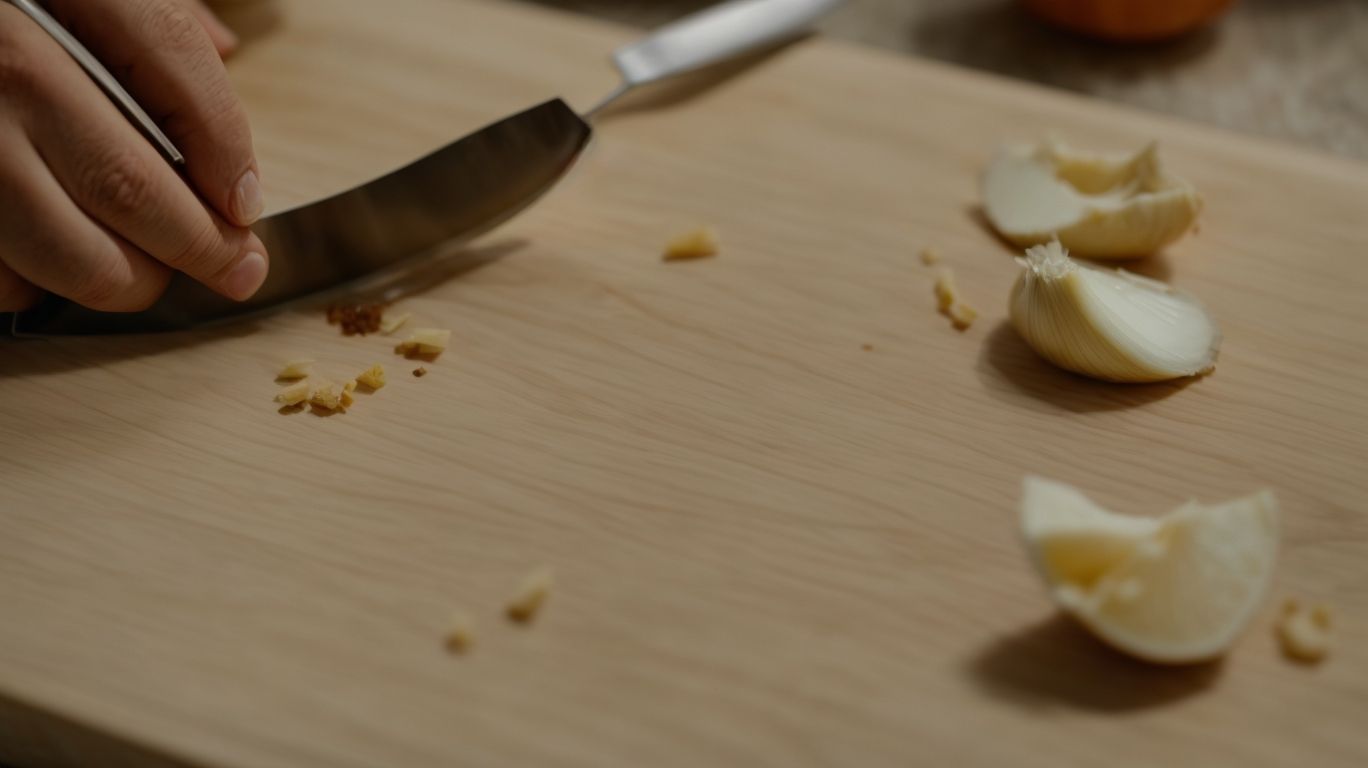
Credits: Poormet.Com – Patrick Miller
Enhance your garlic bread cooking skills by selecting the right garlic, experimenting with diverse flavors, and mastering the ideal cooking time and temperature for that perfect crunch.
In terms of adding flavor to your garlic bread, the type of garlic you use can make a significant difference. Opt for fresh garlic cloves over pre-minced ones for a more robust taste. Crushing or finely mincing the garlic before adding it to the bread can ensure even distribution of flavor. You can also experiment with roasted garlic for a milder and slightly sweet undertone.
To elevate your garlic bread further, consider incorporating additional ingredients like parmesan cheese, herbs such as parsley or oregano, or a sprinkle of red pepper flakes for a hint of heat. Mixing garlic with butter and herbs before spreading it on the bread can intensify the flavors and create a more aromatic outcome.
For optimal cooking results, toast the bread slices slightly before adding the garlic mixture to enhance the crunch factor. Keeping an eye on the cooking time and temperature is crucial to prevent burning while achieving that golden, crispy texture. Serve your garlic bread warm and fresh for a delightful culinary experience that will surely impress your guests.
Choosing the Right Type of Garlic
Selecting the right type of garlic can make a significant difference in the flavor profile of your garlic bread, whether you prefer a subtle garlic kick or a robust garlic presence.
For a milder garlic flavor, opt for varieties like Silverskin or Artichoke garlic, which offer a more delicate taste. These types are ideal for those who enjoy a gentle hint of garlic without overpowering other flavors.
On the other hand, if you crave a bold and intense garlic taste, consider using Rocambole or Porcelain garlic. These varieties pack a powerful punch and are perfect for garlic enthusiasts looking for a robust garlic presence in their dishes.
Experimenting with different garlic varieties can add depth and complexity to your recipes. To achieve varying levels of garlic intensity, try adjusting the amount of garlic used or explore methods like roasting or sautéing to enhance its flavor.
Adding Other Flavors to Garlic Bread
Elevate the taste of your garlic bread by incorporating additional flavors such as fragrant olive oil, fresh herbs, and a pinch of salt to create a harmonious medley of tastes.
Adding a drizzle of honey to your garlic bread can introduce a delightful hint of sweetness that complements the savory notes of the garlic. You can also experiment with toppings like caramelized onions or roasted cherry tomatoes to add depth and complexity to each bite. Consider sprinkling some parmesan cheese on top before baking for a crispy, cheesy crust that enhances the overall texture.
Cooking Time and Temperature for Garlic Bread
Achieving the perfect garlic bread requires precise timing and temperature control during baking to ensure a crispy exterior and a soft, flavorful interior.
When determining the ideal cooking time, typically, garlic bread needs to bake for around 10-15 minutes at 375°F (190°C) in a preheated oven. To prevent burning, it’s advisable to cover the garlic bread loosely with foil during the first part of the baking process, removing it towards the end for a golden brown finish.
Storing garlic bread properly is essential to maintain its freshness and taste. Once cooled, wrap the garlic bread in airtight packaging or store it in a resealable bag. Refrigeration is also an option, but make sure to reheat it in the oven before serving to restore its original texture.
How to Store and Reheat Garlic Bread?
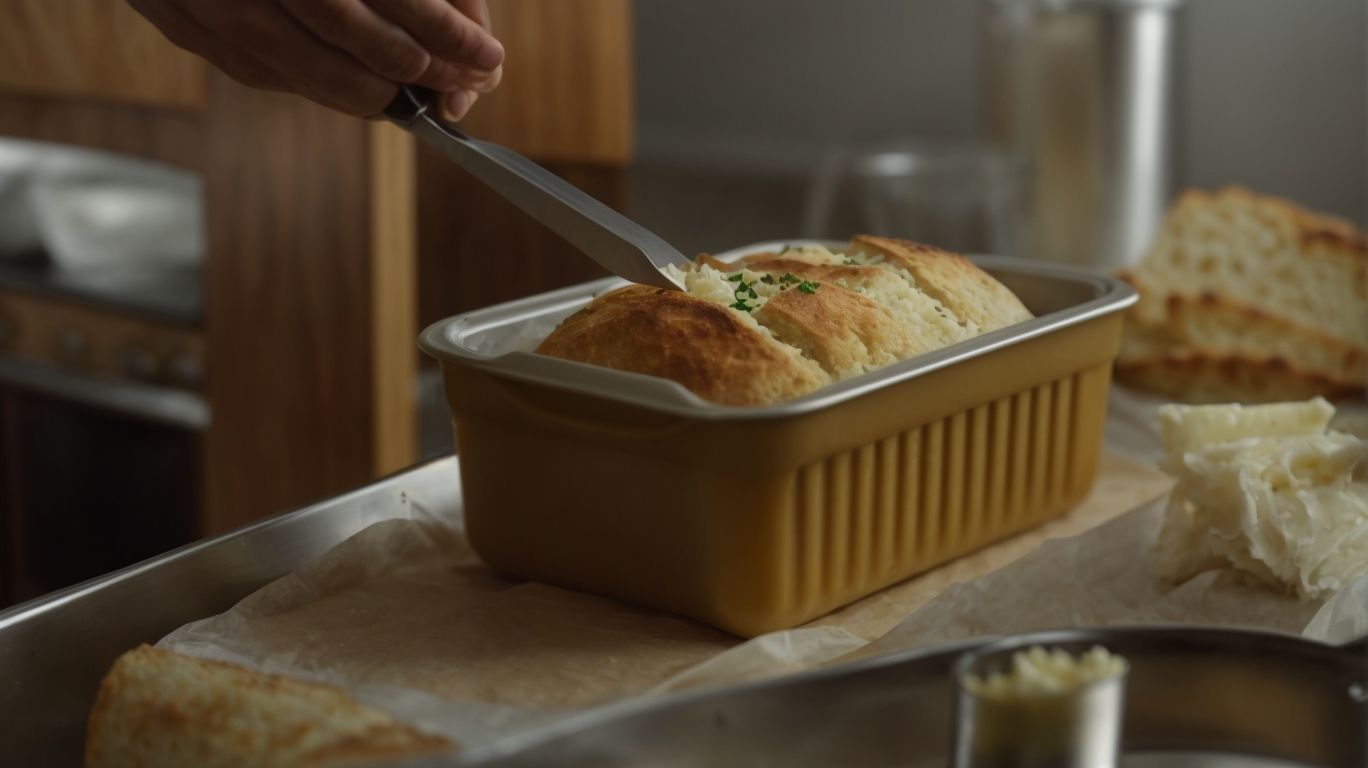
Credits: Poormet.Com – Jeffrey King
Properly storing and reheating garlic bread can help preserve its texture and flavor, ensuring that each slice remains as delicious as when it was freshly baked.
When storing leftover garlic bread, it is essential to keep it in an airtight container or resealable bag to prevent it from becoming stale or absorbing other odors in the fridge. For longer preservation, consider wrapping individual slices in foil before placing them in the container. To reheat garlic bread while maintaining its crispiness, avoid using a microwave that can make it soggy. Instead, preheat the oven to 350°F, brush the bread with a mixture of olive oil and minced garlic, and bake for a few minutes until warm and crunchy.
Conclusion
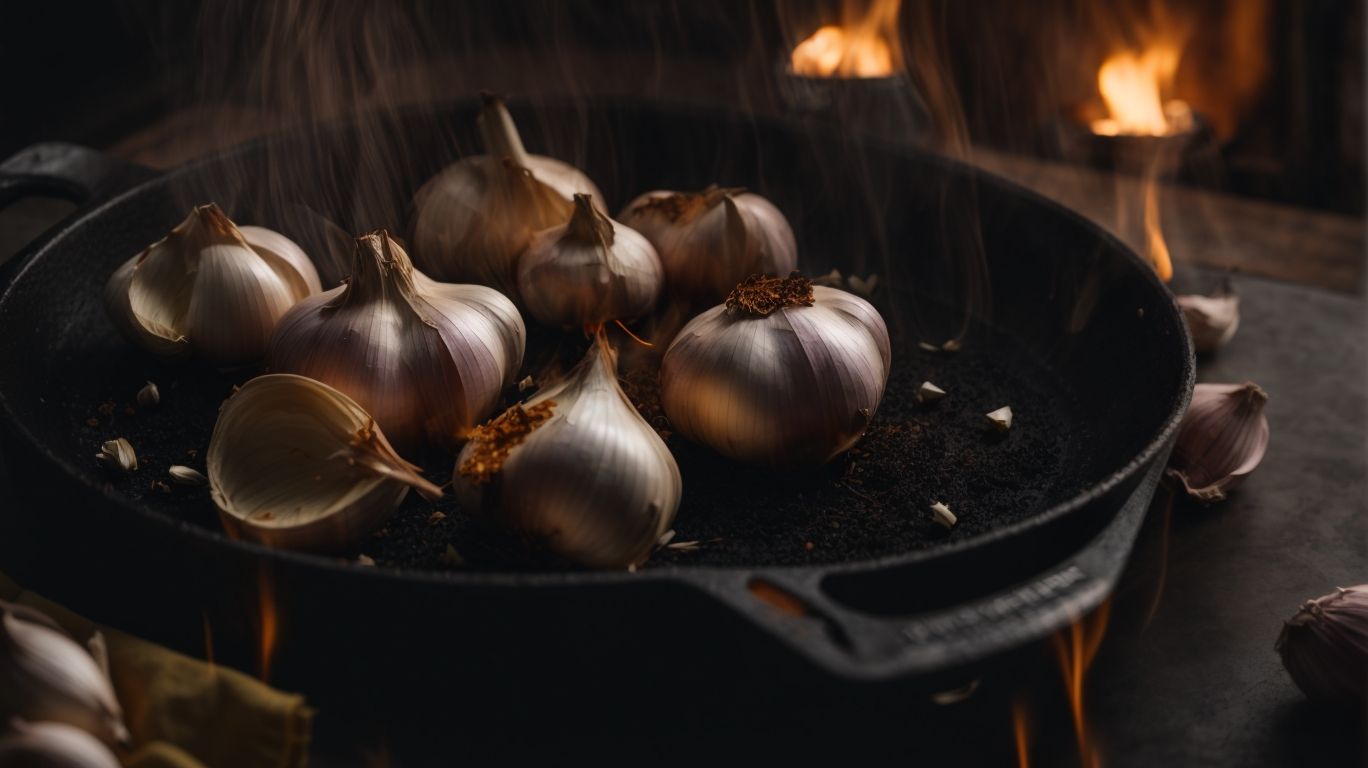
Credits: Poormet.Com – Dennis Gonzalez
In conclusion, garlic is a culinary staple that adds depth and complexity to a wide range of dishes, from savory entrees to aromatic bread creations.
Its versatility in the kitchen extends beyond its unmistakable flavor profile to its numerous health benefits, making it a must-have ingredient in any pantry. Whether roasted, minced, or sautéed, garlic not only elevates the taste of a dish but also provides antioxidant and anti-inflammatory properties beneficial for overall well-being.
According to the USDA, garlic is rich in vitamins C and B6, as well as manganese and selenium, contributing to its immune-boosting and detoxifying effects.
Scientific studies have shown that regular consumption of garlic may help lower cholesterol levels and reduce the risk of heart disease.
Frequently Asked Questions
What is the best way to cook garlic for garlic bread?
The best way to cook garlic for garlic bread is to mince it and then sauté it in butter until it becomes fragrant and slightly golden. This will infuse the butter with a delicious garlic flavor that will elevate your garlic bread to the next level.
Can you use pre-minced garlic for garlic bread?
If you must, you can use pre-minced garlic for garlic bread, but it won’t have the same depth of flavor as freshly minced garlic. Pre-minced garlic tends to have a milder taste and can also have a chemical aftertaste. It’s best to use fresh garlic for the best results.
How long should you cook garlic for garlic bread?
You should cook garlic for garlic bread for about 3-4 minutes, or until it becomes fragrant and slightly golden. Overcooking garlic can make it bitter and burnt, so be sure to keep an eye on it while cooking.
Can you use garlic powder for garlic bread?
While you can use garlic powder for garlic bread, it won’t have the same intensity of flavor as minced or fresh garlic. If you are in a pinch, you can use garlic powder, but we recommend using fresh garlic for the best flavor.
Do you need to remove the garlic from the butter before spreading it on the bread?
No, you do not need to remove the garlic from the butter before spreading it on the bread. In fact, leaving the minced garlic in the butter will only enhance the flavor of the garlic bread. Just be sure to evenly distribute the garlic and butter mixture on the bread before baking.
Can you cook garlic and butter together in the microwave?
Yes, you can cook garlic and butter together in the microwave, but it may not have the same depth of flavor as cooking it on the stovetop. If you are short on time, you can cook the garlic and butter in the microwave for 30-second intervals until the garlic becomes fragrant and slightly golden.

